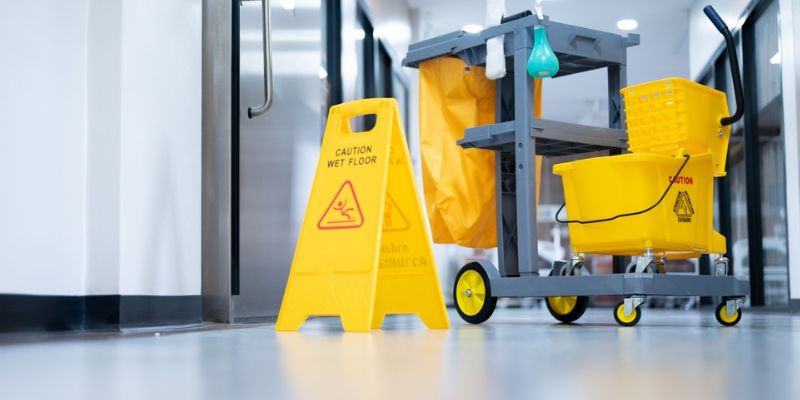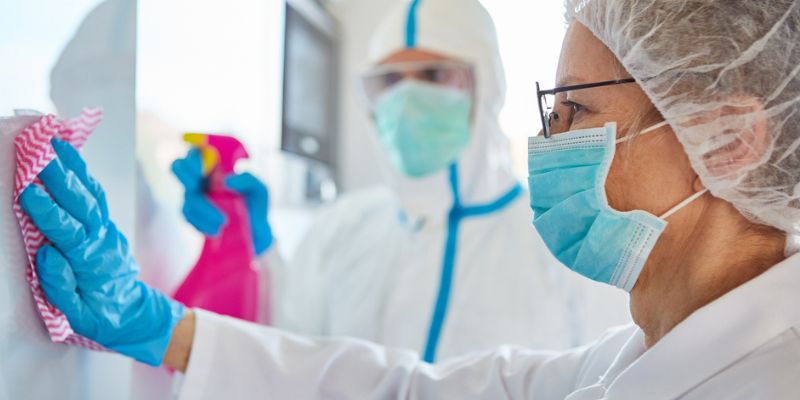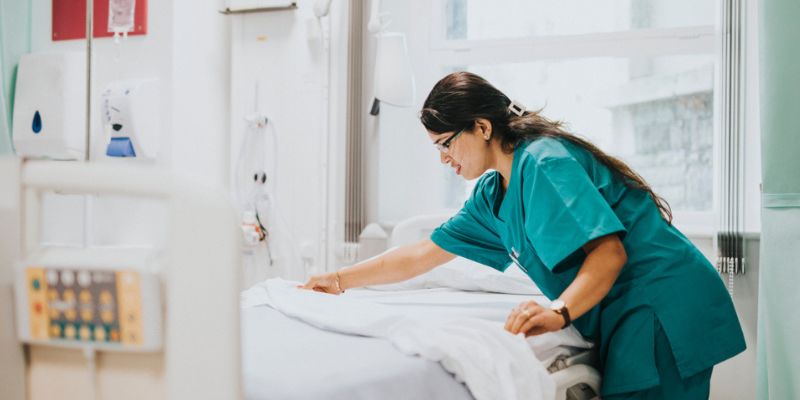Therefore, investing in professional cleaning in medical facilities is not a cosmetic decision but a critical component of clinical safety, regulatory compliance, and community reputation.
From Infection Control to Patient Satisfaction
Caregivers deliver remarkable outcomes, but the most precise surgery or accurate diagnosis can still lead to complications if environmental surfaces harbor pathogens. Clean, disinfected surroundings reduce exposure to bacteria, viruses, and fungi for patients whose immune responses may be compromised.
Families judge a practice’s quality by what they see in waiting rooms, exam suites, and restrooms. Sparkling floors and fingerprint-free fixtures tell them the entire operation pays attention to detail, reinforcing trust in medical advice and encouraging positive online reviews.
Regulatory Drivers: CDC, OSHA, and Joint Commission Requirements
Los Angeles facilities operate under overlapping mandates. The Centers for Disease Control and Prevention outline evidence-based environmental guidelines. The Occupational Safety and Health Administration enforces worker protections, including bloodborne pathogen standards.The Joint Commission audits surface sanitation, supply storage, and documentation during accreditation visits.
Failing these evaluations can jeopardize funding, insurance reimbursements, or operating licenses. A robust janitorial plan built around healthcare-specific regulations ensures that audits become opportunities to shine rather than episodes of frantic catch-up.
Risk Profile: How Pathogens Thrive in Clinical Environments
Bacteria and viruses flourish wherever organic material meets warmth and moisture. In medical spaces, traffic volume is high, occupancy turns rapidly, and patient populations often carry infectious agents. Hand hygiene among staff is excellent, yet contact surfaces accumulate microbes as patients adjust pillows, visitors lean on counters, and clinicians chart data between glove changes.
The more frequently these areas are disinfected with hospital-grade products, the less chance pathogens have to migrate from the surface to the bloodstream.
Key Elements of a Medical-Grade Janitorial Program
Commercial cleaners can clean lobbies, but healthcare demands additional science, documentation, and specialty equipment.

EPA-Registered Disinfectants and Dwell-Time Compliance
Labels approved by the Environmental Protection Agency specify the organisms killed and the minutes a surface must remain visibly wet. While spraying and wiping immediately might appear thorough, they fail microbiology. Professional crews follow dwell-time charts, rotating chemical families to prevent bacterial resistance and ensure each product meets medical office cleaning standards.

Daily, Terminal, and Deep-Cleaning Protocols Explained
Different spaces require distinct frequencies and procedures. Occupied patient rooms receive daily low-impact service focusing on touchpoints, waste removal, and floor sanitation without disturbing medical devices.
After discharge or transfer, terminal cleaning begins: linens to containment, curtain changes, wall disinfection, and ultraviolet light verification when available. Each step resets the space for the next patient with no microbial baggage.

Staff Training and Certification Requirements
Hiring enthusiastic personnel is easy. Equipping them with healthcare-specific expertise is the differentiator. Some janitorials encounter sharps containers, potential spatter, and biohazard linen. OSHA’s bloodborne pathogen rule mandates annual training on exposure routes, vaccination availability, and incident response, such as proper equipment, including gowns, gloves, and face shields, that is stocked, sized, and donned for tasks where splash risk exists.
Healthcare is dynamic. New disinfectants, updated pathogen alerts, and revised OSHA interpretations emerge yearly. A culture of continuous improvement sees supervisors observe technique, record findings, and review refresher modules. That cycle maintains expertise cleaning standards rather than relying on initial orientation alone.

Environmental Services and Patient Experience
Cleanliness extends beyond microbiology to sensory comfort. ICU patients need rest. Low-decibel vacuums, foam spray bottles instead of aerosols, and rubber anti-vibration wheels on carts reduce noise. Scheduling floor machines during visiting hours away from high-acuity zones balances throughput and tranquility.
Depending on the intensity of cleaning in a hospital, scent can reassure or alarm. Proper dilution avoids overpowering odors, while rapid bio-spill response prevents lingering smells undermining a facility’s healing ambience. Spot-free windows, gleaming baseboards, and a uniform sheen on casework project competence, reassuring patients and families that they chose the right place for care.
Choosing the Right Janitorial Partner for Healthcare Facilities
Not every cleaning contractor is equipped to handle the complexity of healthcare. The Los Angeles healthcare ecosystem competes fiercely on outcomes, amenities, and patient feedback. Environmental hygiene is a core pillar supporting all three. Selecting a janitorial partner steeped in medical protocol knowledge ensures that flooring, fixtures, and air quality work harmoniously with clinical care, rather than undermining it.
JR Janitorial Service positions its healthcare division at the forefront of Los Angeles sanitation innovation. Our teams combine rigorously trained technicians, hospital-grade chemistry, and cutting-edge verification technology to excel in our cleaning in medical facilities.
Request a no-obligation compliance audit today and discover how our commitment to expert cleaning can elevate your facility’s safety scores, patient satisfaction, and regulatory confidence. In medicine, clean is not just neat; it is lifesaving.

